Donate now to support the LLIFLE projects.
Your support is critical to our success.
Your support is critical to our success.
Accepted Scientific Name: Mammillaria polythele cv. Stachellos
(forma inermis, sin pico)
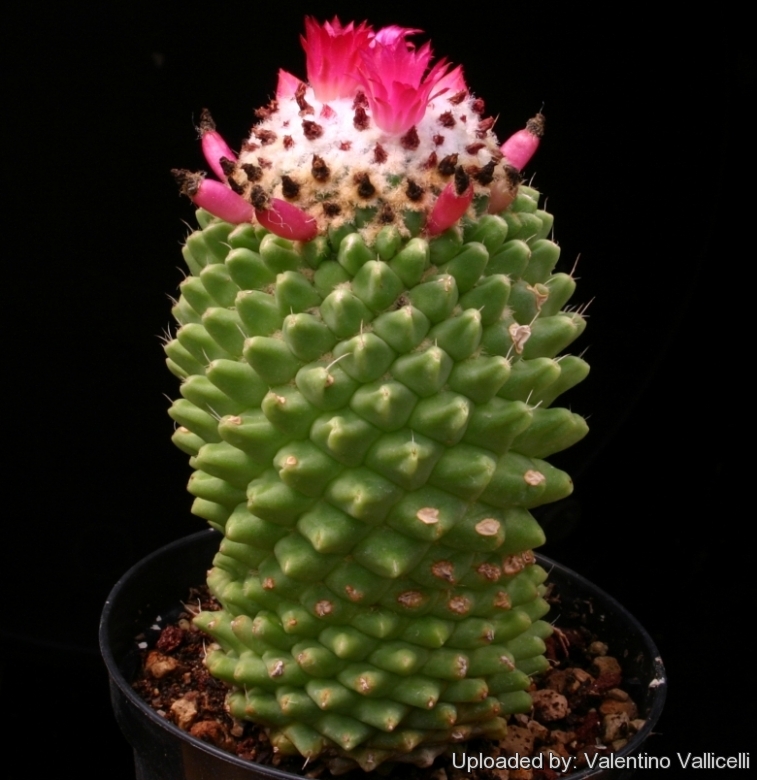
Mammillaria tulensis cv. stachellos (Mammillaria polythele cv. Stachellos) Photo by: Valentino Vallicelli
Theis cultivar looks a bit like a green pine cone with few or no spines. The apex is clothed in white wool. The pinkish purple flowers come in large numbers from spring to late summer.
Theis cultivar looks a bit like a green pine cone with few or no spines. The apex is clothed in white wool. The pinkish purple flowers come in large numbers from spring to late summer.
Synonyms:
See all synonyms of Mammillaria polythele
back
Accepted name in llifle Database:Mammillaria polythele Mart.
Hort. Reg. Monac. (1829) 127, nomen; et in Nov. Actorum Acad. Caes. Leop.-Carol. German. Nat. Cur. 16(1): 328, pl. 19 328 1832.
Synonymy: 24
- Mammillaria polythele Mart.
- Cactus polythele (Mart.) Kuntze
- Neomammillaria polythele (Mart.) Britton & Rose
- Mammillaria crocidata Lem.
- Mammillaria dolichocentra Lem.
- Cactus dolichocentrus (Lem.) Kuntze
- Neomammillaria dolichocentra (Lem.) Tiegel
- Mammillaria galeottii Scheidw.
- Mammillaria dolichocentra var. galeottii (Scheidw.) Salm-Dyck ex C.F.Först.
- Mammillaria obconella var. galeottii (Scheidw.) Backeb.
- Mammillaria obscura var. galeottii (Scheidw.) Salm-Dyck ex C.F.Först.
- Mammillaria tetracantha var. galeottii (Scheidw.) Borg
- Neomammillaria galeottii (Scheidw.) Britton & Rose
- Mammillaria hidalgensis J.A.Purpus
- Neomammillaria hidalgensis (J.A.Purpus) Y.Itô
- Mammillaria hoffmanniana (Tiegel) Bravo
- Neomammillaria hoffmanniana Tiegel
- Mammillaria kewensis Salm-Dyck
- Neomammillaria kewensis (Salm-Dyck) Britton & Rose
- Mammillaria neophaeacantha Fritz Schwarz
- Mammillaria tetracantha Salm-Dyck
- Cactus tetracanthus (Salm-Dyck) Kuntze
- Neomammillaria tetracantha (Salm-Dyck) Britton & Rose
- Mammillaria xochipilli Repp.
Mammillaria polythele subs. durispina (Boed.) D.R.Hunt
Mammillaria Postscripts 6: 7 7 1997
Synonymy: 6
- Mammillaria polythele subs. durispina (Boed.) D.R.Hunt
- Mammillaria durispina Boed.
- Neomammillaria durispina (Boed.) Y.Itô
- Mammillaria kelleriana F.Schmoll ex R.T.Craig
- Mammillaria subdurispina Fritz Schwarz
- Neomammillaria subdurispina (Backeb.) Y.Itô
Mammillaria polythele subs. obconella (Scheidw.) D.R.Hunt
Mammillaria Postscripts 6: 7 7 1997
Synonymy: 5
- Mammillaria polythele subs. obconella (Scheidw.) D.R.Hunt
- Cactus obconella (Scheidw.) Kuntze
- Mammillaria obconella Scheidw.
- Neomammillaria obconella (Scheidw.) Y.Itô
- Mammillaria ingens Backeb.
back
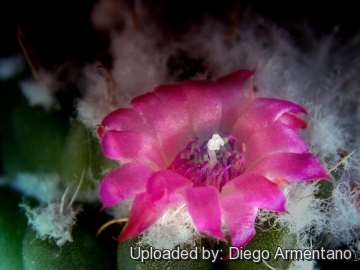
Mammillaria tulensis cv. stachellos (Mammillaria polythele cv. Stachellos) Photo by: Diego Armentano
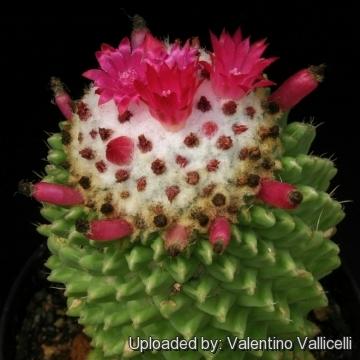
Mammillaria tulensis cv. stachellos (Mammillaria polythele cv. Stachellos) Photo by: Valentino Vallicelli

Mammillaria tulensis cv. stachellos (Mammillaria polythele cv. Stachellos) Photo by: Cactus Art
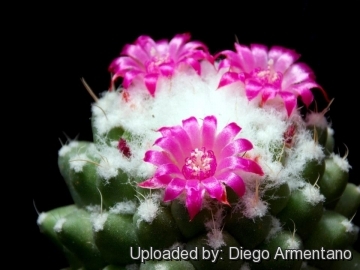
Mammillaria tulensis cv. stachellos (Mammillaria polythele cv. Stachellos) Photo by: Diego Armentano
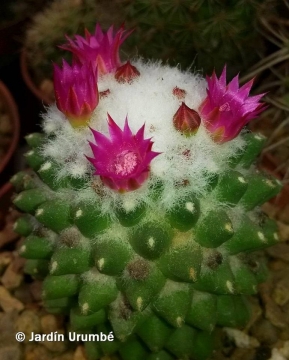
Mammillaria tulensis cv. stachellos (Mammillaria polythele cv. Stachellos) Photo by: Alexander Arzberger
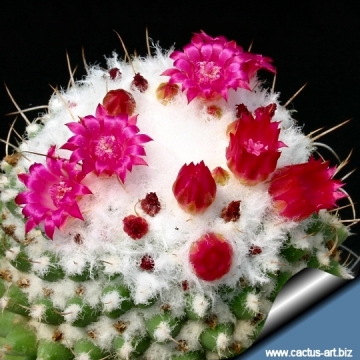
Mammillaria tulensis cv. stachellos (Mammillaria polythele cv. Stachellos) Photo by: Cactus Art
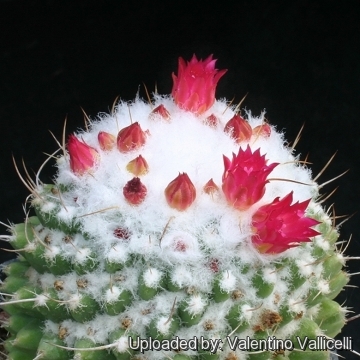
Mammillaria tulensis cv. stachellos (Mammillaria polythele cv. Stachellos) Photo by: Valentino Vallicelli
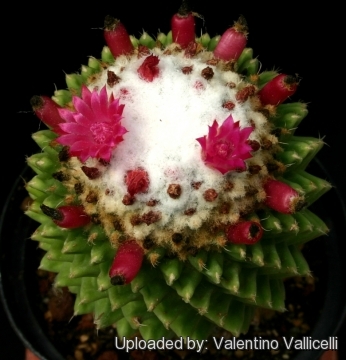
Mammillaria tulensis cv. stachellos (Mammillaria polythele cv. Stachellos) Photo by: Valentino Vallicelli
| Your Actions | |
|---|---|
| Back to Mammillaria index | |
| Back to Cactaceae index | |
 |
Back to Cacti Encyclopedia index |








